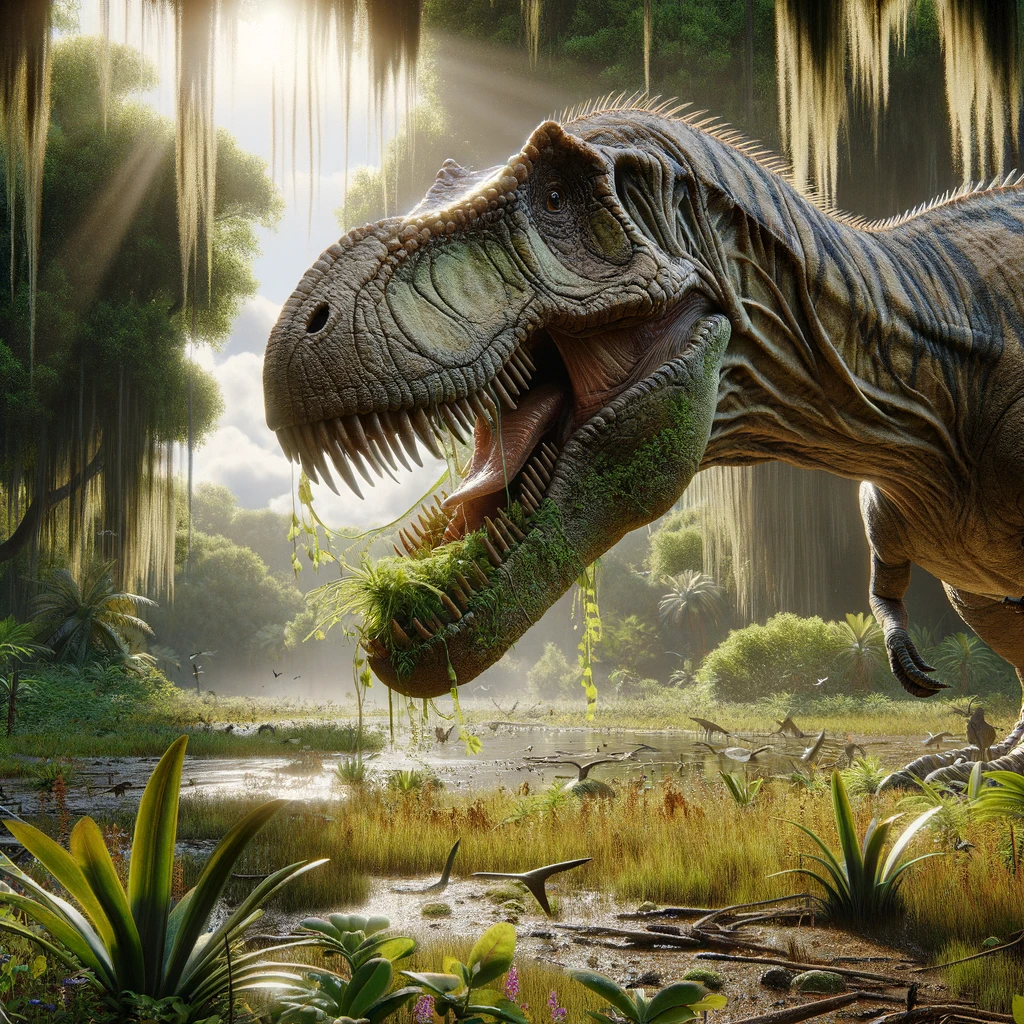Discover the Amazing Dinosaur with 500 Teeth
Dinosaurs have always fascinated us with their colossal size, unique features, and intriguing mysteries. One such enigma lies in a lesser-known dinosaur that roamed the Earth during the Late Cretaceous period. This remarkable creature is known for its extraordinary dental arsenal -A dinosaur with 500 Teeth!
In this blog, we’ll delve into the fascinating world of this toothy giant, uncovering its history, characteristics, and the scientific marvel it represents. If you are a fan of these creatures you might check out our collections @dinosaurzus.com
Meet Nigersaurus taqueti: Dinosaur with 500 Teeth
The dinosaur with a 500-teeth grin is none other than the Nigersaurus taqueti. Discovered in the Sahara Desert of Niger, Africa, by paleontologist Dr. Paul Sereno and his team in the mid-1990s, this dinosaur quickly captured the imagination of the scientific community🦖.
Physical Characteristics
Standing at around 30 feet long, the Dinosaur with 500 Teeth was a relatively small sauropod, a subgroup of long-necked dinosaurs. What truly sets this dinosaur apart, however, is its jaw structure. The head of the Nigersaurus is long and slender, with a wide mouth and a seemingly endless array of teeth.
Skull and Jaws
The Dinosaur with 500 Teeth is characterized by its elongated, narrow skull, despite having a relatively small head compared to its body size. Its jaw boasted numerous slender, pencil-like teeth arranged in rows, adapted for cropping vegetation, suggesting a herbivorous diet.
Neck
Nigersaurus possessed an exceptionally long neck, measuring up to 30 feet (about 9 meters) in length. This unique feature enabled it to graze over a wide area without requiring extensive body movement.
Posture
The Nigersaurus had a relatively low-slung body with a relatively horizontal posture, which likely contributed to its efficient browsing habits as it roamed the ancient landscapes of its habitat.
Body Size
It was a medium-sized dinosaur, with an estimated length of about 9 meters (30 feet) from head to tail. Limbs: It had sturdy, column-like limbs with relatively short feet. Tail: The tail of the Nigersaurus was moderately long and tapering, providing balance and stability. Back Vertebrae: The back vertebrae of Nigersaurus were elongated and formed a series of V-shaped crests along its back.
Skeleton Structure and Other Characteristics
The bones of Nigersaurus were lightweight, a characteristic often seen in herbivores to support their large size. While not as heavily armored as some other dinosaurs, Nigersaurus had small, pebble-like dermal ossicles (scutes) embedded in its skin, providing some level of protection. Like many dinosaurs, Nigersaurus is believed to have undergone rapid growth during its early years and reached maturity in a relatively short period.
Its dental structure and the arrangement of its teeth indicate a specialization in consuming soft vegetation, potentially including ferns and other low-growing plants. The skull of this Dinosaur with 500 Teeth, the Nigersaurus featured large openings (fenestrae) which reduced its weight and likely played a role in the overall efficiency of its feeding apparatus.
The Dental Marvel
In the ever-evolving field of dentistry, a groundbreaking innovation has emerged, poised to revolutionize oral health care as we know it. Enter “The Dental Marvel” – a game-changing advancement that promises to enhance the way we approach dental hygiene, treatments, and overall oral wellness of the the Dinosaur with 500 Teeth.
Feeding Behavior
The unique dental configuration of the Dinosaur with 500 Teeth the Nigersaurus provides insight into its feeding habits. Unlike its towering sauropod relatives that could reach for higher vegetation, Nigersaurus was a low-level browser. Its neck was adapted to graze close to the ground, allowing it to feed on ferns and other low-lying vegetation. The dense concentration of teeth enabled it to efficiently crop plants, similar to a modern-day lawnmower.
Adaptations for Efficient Grazing
Beyond its teeth, the Nigersaurus the Dinosaur with 500 Teeth, boasted several other adaptations for efficient grazing. Its neck was relatively short compared to other sauropods, and its skull was well-designed for ground-level foraging. Furthermore, its jaw mechanics were optimized for horizontal cropping motions, making it an expert in its niche.
Life in the Late Cretaceous
The Dinosaur with 500 Teeth, the Nigersaurus thrived during the Late Cretaceous period, approximately 115 to 98 million years ago. This was a time of diverse dinosaur ecosystems, with various species occupying different ecological niches. The Sahara, which is now a vast desert, was once a lush, tropical environment, teeming with an array of ancient life forms.
Legacy and Importance
The discovery of the Dinosaur with 500 Teeth Nigersaurus taqueti revolutionized our understanding of sauropod dinosaurs and herbivorous feeding strategies. Its unique dental adaptation is a testament to the incredible diversity and specialization that existed among dinosaurs. Additionally, it provides valuable insights into the ecosystems of the Late Cretaceous period.
Conclusion
The Dinosaur with 500 Teeth which is called Nigersaurus taqueti stands as a testament to the wonders of prehistoric life. Its remarkable dental adaptation, with an astounding 500 teeth, showcases the incredible diversity of dinosaurs and their ability to occupy specialized ecological niches. As we continue to unearth fossils and piece together the puzzle of Earth’s ancient past, dinosaurs like Nigersaurus serve as a constant source of inspiration and discovery.
For more amazing blogs about dinosaurs, check out this link: The Acheroraptor: An Insight into a Tiny but Fierce Dinosaur
Check out for more interesting topic about dinosaurs @dinosaurzus.

Top posts
related articles
Discover The Top 10 Longest Dinosaur Names
Dinosaurs, the ancient giants that once roamed the Earth, continue to capture our imagination. While
Acheroraptor – Tiny But Fierce Dinosaur
The dinosaur world is undoubtedly fascinating, and the relative discovery of the Acheroraptor is no
Amazing Cryolophosaurus- An Epic Tale
Cryolophosaurus, also known as the ‘Antarctic King’, was a fierce and fascinating dinosaur that existed
Discover Torosaurus And Its Mysterious Identity
Dinosaurs don’t exist anymore, but their fossils still fascinate us. Paleontologists scour the earth to
Corythosaurus–Exploring Its Wondrous World
The world of dinosaurs never stops fantastic us. From the huge T-rex to the tiny
Kentrosaurus–Discover Amazing Facts
Dinosaurs have always been a fascinating topic for both kids and adults alike. One of



